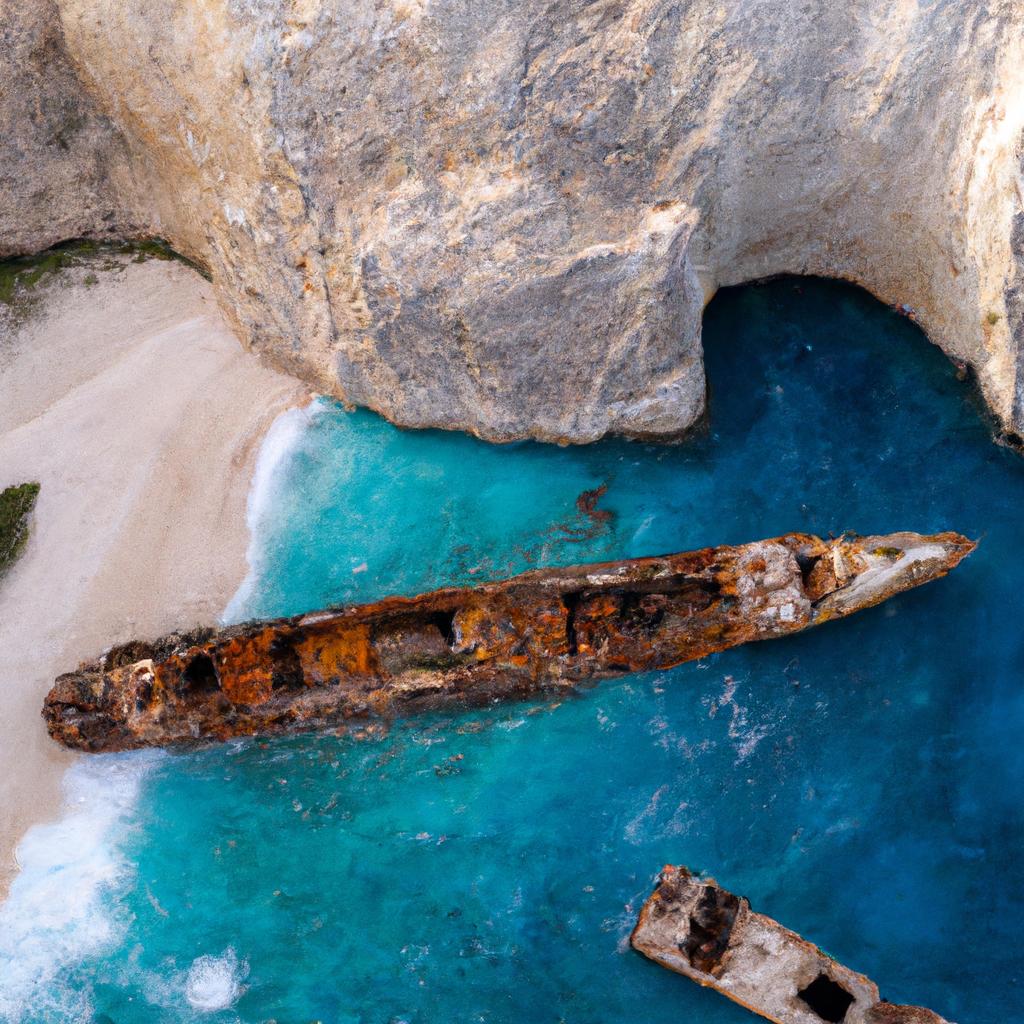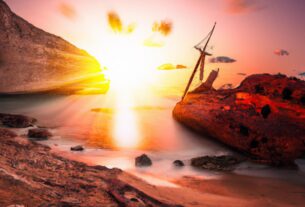Are you on the lookout for a beach destination that combines history, culture, and natural beauty? Look no further than Navagio Shipwreck Beach, also known as “Smugglers Cove,” on the breathtaking Zakynthos Island in Greece.
Navagio Shipwreck Beach mesmerizes visitors with crystal-clear turquoise waters, white sand, and towering limestone cliffs. Its main attraction is the rusting hulk of a shipwreck named MV Panagiotis, stranded on the shore since 1980, adding a unique charm to the already stunning scenery.
Over the years, Navagio Shipwreck Beach has become a hot spot for tourists, attracting millions of visitors from around the world annually. It is renowned for its mesmerizing beauty, excellent swimming and snorkeling opportunities, and heart-pumping cliff-jumping activities.
Getting to Navagio Shipwreck Beach
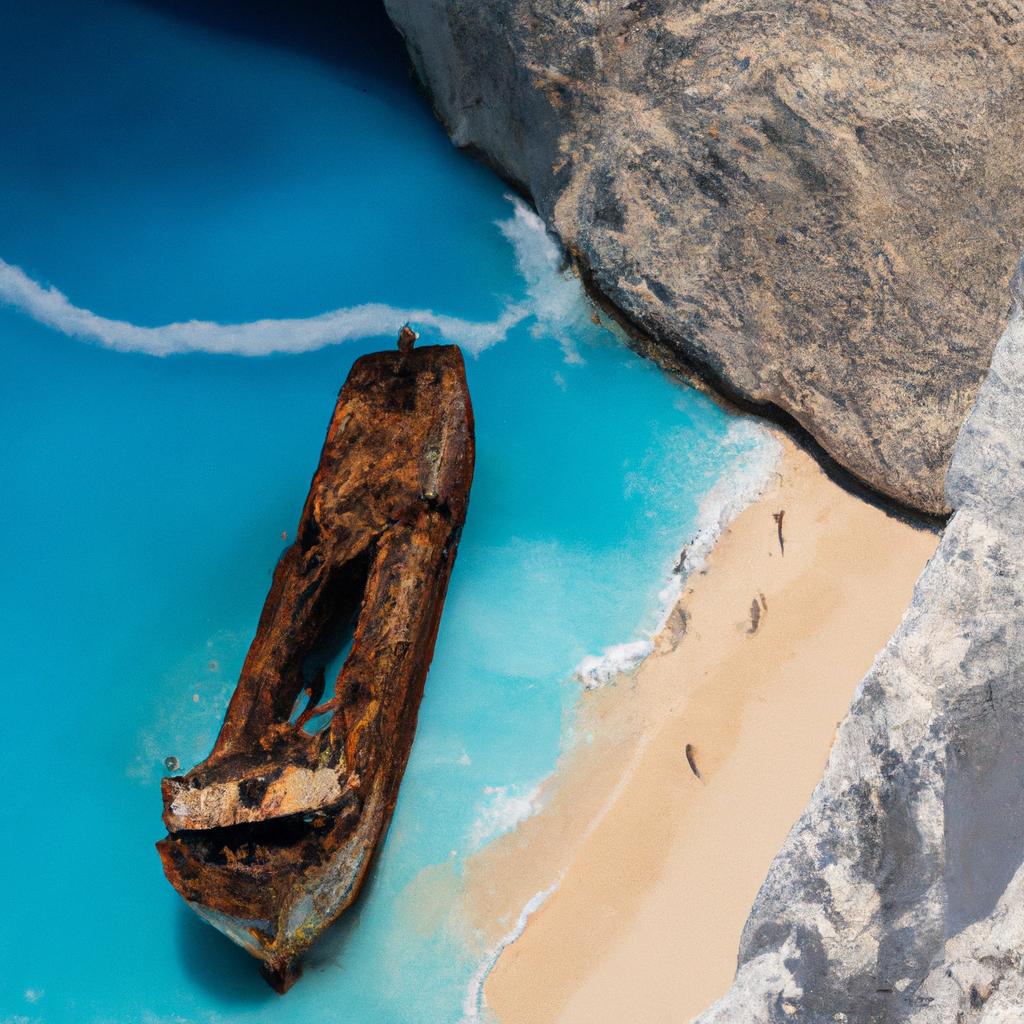
Modes of Transportation to the Beach
Navagio Shipwreck Beach is accessible only by boat, which is the most popular mode of transportation. Boat tours are available from nearby ports, including Agios Nikolaos, Porto Vromi, and Skinari. You can choose between a private boat tour or joining a group tour, which often includes a visit to the nearby Blue Caves.
Another option is to rent a personal watercraft, such as a jet ski or a speedboat, for a leisurely exploration of the beach. However, keep in mind that personal watercraft rentals can be pricey and require valid licenses.
Directions to the Beach from Nearby Towns and Cities
If you prefer to travel by car, you can reach Navagio Shipwreck Beach by driving to the nearby village of Volimes and following the signs to the beach. The journey takes approximately 45 minutes from Zakynthos Town.
Alternatively, you can take a bus from Zakynthos Town to the village of Anafonitria and then hike down to the beach. The hike takes about 30 minutes and rewards you with breathtaking views of the surrounding landscape.
Tips for Navigating the Roads and Parking at the Beach
The road leading to Navagio Shipwreck Beach is narrow and winding, with steep drops on either side, so it’s crucial to drive with caution. If you’re not confident driving, it’s best to opt for a boat tour.
Parking at the beach can be challenging, especially during peak season, so it’s advisable to arrive early in the morning or late in the afternoon. Be prepared to pay a small fee for parking, and remember to lock your car and keep valuables out of sight.
Exploring Navagio Shipwreck Beach
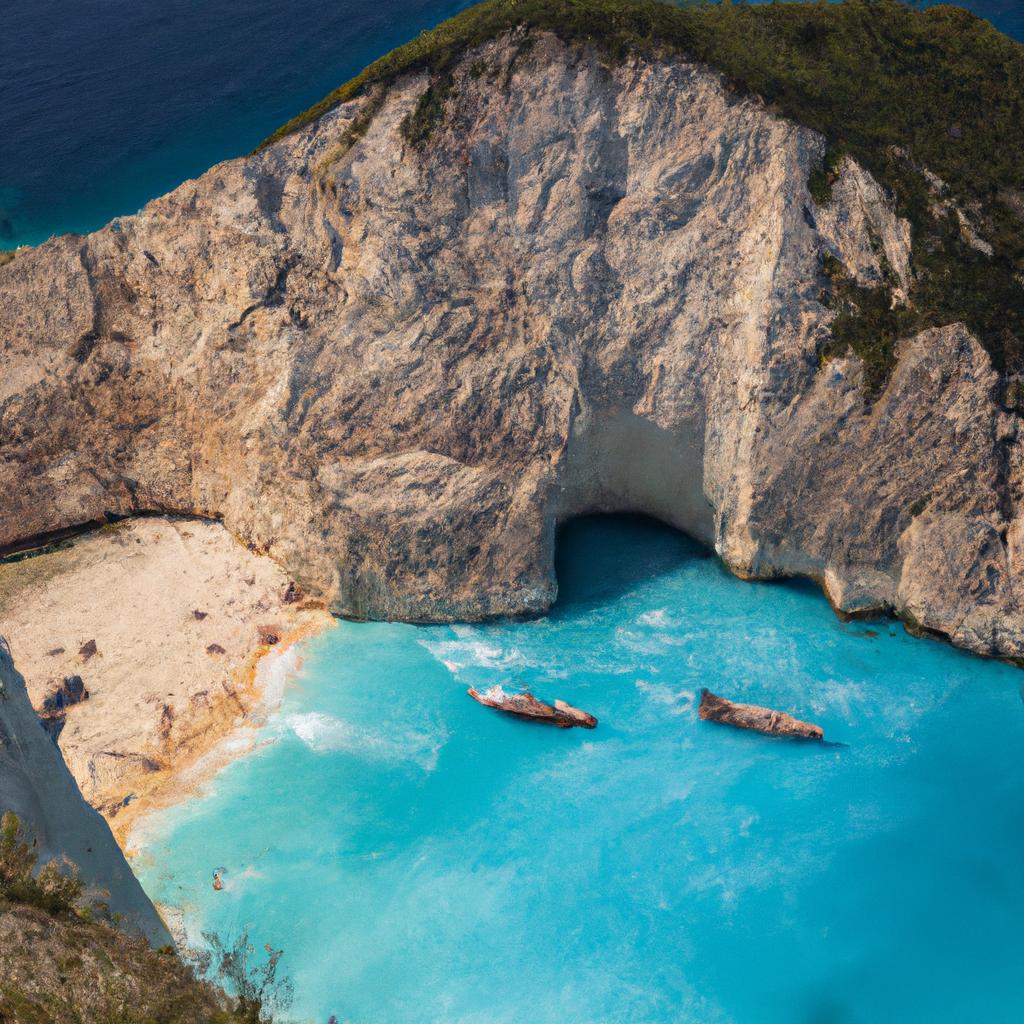
Are you ready to delve into Navagio Shipwreck Beach and experience all it has to offer? Let’s explore the amenities, activities, and the best times to visit.
Beach Amenities and Facilities
Navagio Shipwreck Beach offers several amenities and facilities to ensure a comfortable and enjoyable visit. These include sunbeds and umbrellas for rent, snack bars and restaurants serving local Greek cuisine and refreshing drinks, public restrooms and showers, parking facilities for cars and motorcycles, and tourist shops selling souvenirs and beach essentials.
Activities to Do on the Beach
Navagio Shipwreck Beach isn’t just a feast for the eyes; it also offers plenty of activities for adventure-seekers and water enthusiasts. Here are some of the fun things you can do on the beach:
- Swim and snorkel in the clear blue waters.
- Cliff jump from the top of the surrounding cliffs.
- Kayak and paddleboard around the cove.
- Take a boat tour to explore the beach and nearby attractions.
- Sunbathe and relax on the white-sand beach.
Best Times to Visit the Beach for an Optimal Experience
The best time to visit Navagio Shipwreck Beach is during the summer months, from June to September, when the weather is sunny and warm, and the sea is calm for swimming and water activities. It’s advised to plan your visit early in the morning or late in the afternoon to avoid the crowds and fully enjoy the serene beauty of the beach.
The Rich History and Culture of Navagio Shipwreck Beach
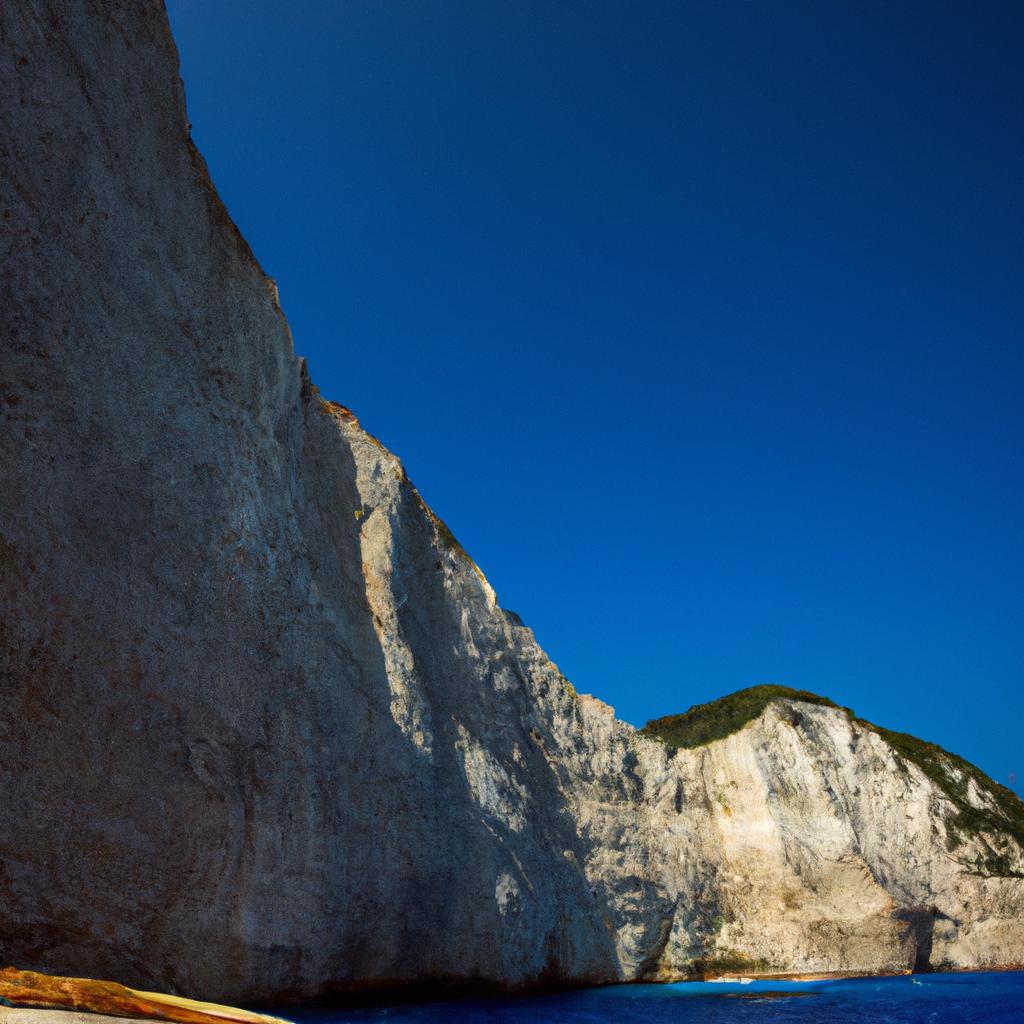
The Story Behind the Shipwreck
Navagio Shipwreck Beach’s history dates back to 1980 when the smuggler’s vessel MV Panagiotis ran aground on the shore while being pursued by the Greek Coast Guard. Over time, the shipwreck has become an iconic landmark and a testament to the island’s fascinating past. The rusted remains of the ship have attracted countless tourists who are eager to catch a glimpse of its haunting beauty.
Local Myths and Legends
Navagio Shipwreck Beach is not without its local myths and legends. According to folklore, the beach served as a smuggler’s cove, with the shipwreck standing as a testament to the illicit activities that once took place there. Some locals even believe that the beach is cursed, and the shipwreck is the result of divine intervention, while others see it as a symbol of the island’s seafaring heritage.
Cultural Significance to the Local Community
Navagio Shipwreck Beach holds significant cultural and historical value for the local community. Its beauty and unique history have become a source of pride for the island’s inhabitants. The shipwreck symbolizes the island’s seafaring past, serving as a reminder of the challenges and perils sailors once faced. Throughout the year, various festivals and celebrations highlight the island’s rich history and culture, further emphasizing the beach’s cultural significance.
Environmental Concerns and Conservation Efforts
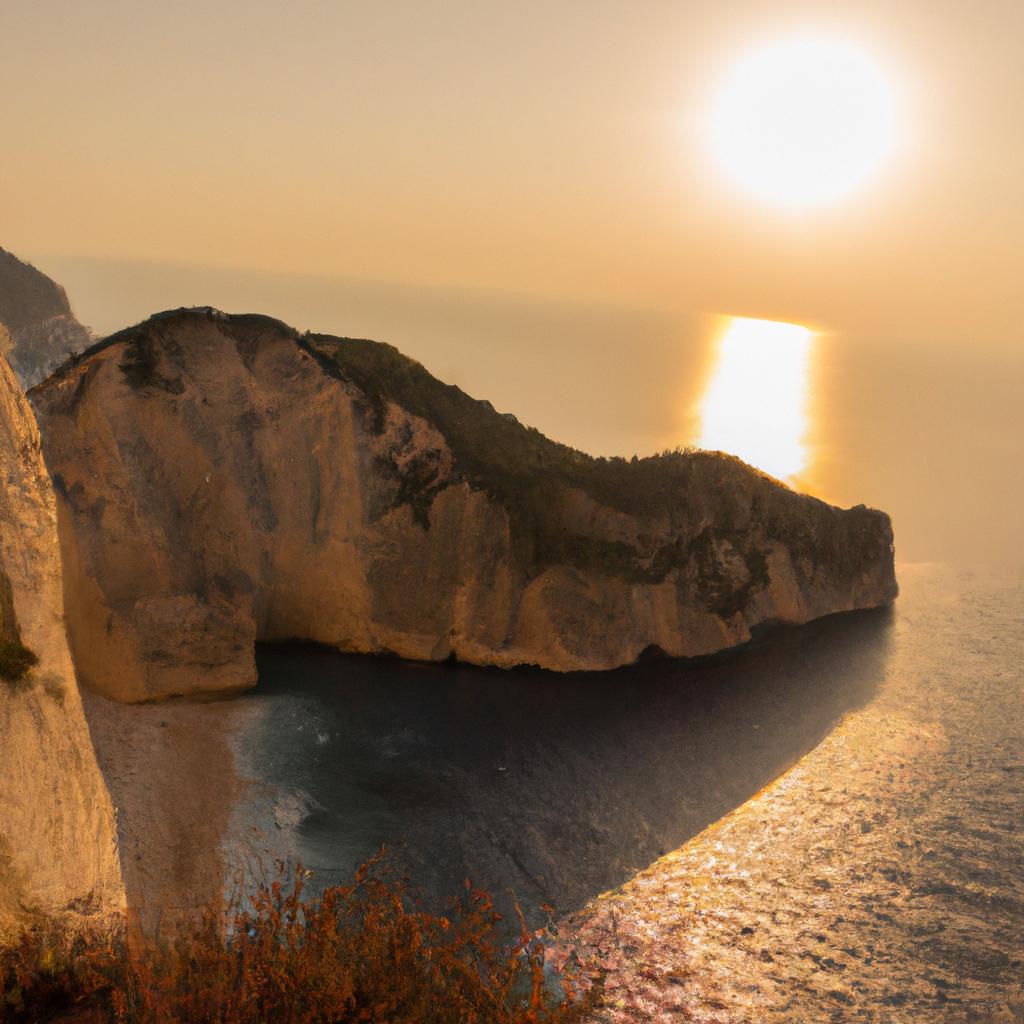
As one of Greece’s most beloved tourist destinations, Navagio Shipwreck Beach has faced environmental challenges due to the influx of visitors. Unfortunately, the high volume of tourists has taken a toll on the beach’s delicate ecosystem, leading to significant environmental concerns.
Environmental Impact of Tourism on Navagio Shipwreck Beach
The surge in visitors has resulted in environmental degradation, including littering, improper waste disposal, and damage to the native vegetation and wildlife. Noise and air pollution caused by the boats that transport tourists also contribute to the ecological issues of the area.
Conservation Efforts to Preserve the Natural Beauty of the Beach
To safeguard the natural beauty of Navagio Shipwreck Beach, various conservation efforts have been implemented. The Greek government has established rules to regulate the number of boats and visitors allowed on the beach at any given time. The beach’s caretakers actively collect litter and promote proper waste disposal.
Efforts are also underway to protect the local wildlife, particularly sea turtles and monk seals, which are endangered species. The island’s authorities have established a Marine Park dedicated to monitoring and conserving the marine life in the area.
Responsible Tourism Practices to Minimize Environmental Impact
As visitors to Navagio Shipwreck Beach, it is crucial to adopt responsible tourism practices and minimize our impact on the environment. Some key practices include proper waste disposal, reducing the use of plastic, and refraining from touching or disturbing wildlife.
By being responsible visitors, we can all contribute to preserving the natural beauty of Navagio Shipwreck Beach for generations to come.
Conclusion
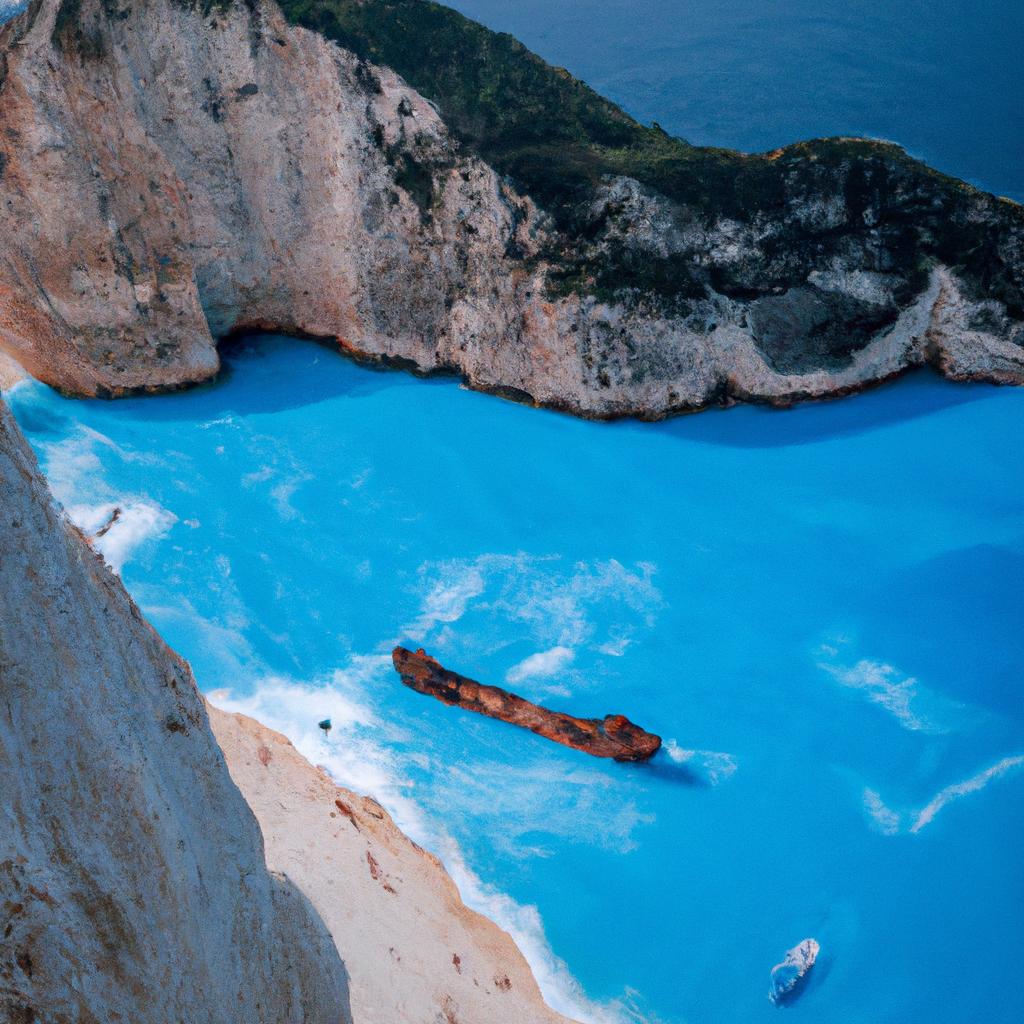
Navagio Shipwreck Beach is an unforgettable destination that seamlessly blends history, culture, and natural splendor. With its crystal-clear waters, pristine white sand, and dramatic cliffs, this beach is a must-visit for travelers seeking a picturesque getaway.
Whether you’re looking to relax on the beach, delve into the shipwreck’s intriguing history, or indulge in adrenaline-pumping cliff-jumping, Navagio Shipwreck Beach offers something for everyone.
At TooLacks, we believe in the importance of preserving natural beauty, and Navagio Shipwreck Beach is no exception. We encourage all visitors to practice responsible tourism by respecting the environment and taking steps to minimize their impact on the beach.
In conclusion, if you’re in search of a destination that offers a unique blend of beauty, history, and culture, Navagio Shipwreck Beach is the ideal choice for you. Don’t miss out on this captivating hotspot, and be sure to add it to your travel bucket list now!
